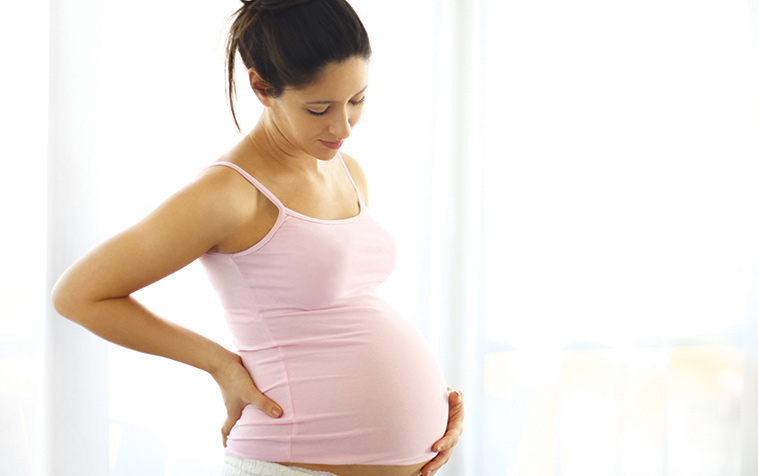
Labour & Birth
Most asked questions
Braxton Hicks are contractions, which tone the uterus but do not dilate (open) the cervix. They occur throughout your pregnancy but you may not feel them until the second trimester and may usually feel more in the third trimester.
Braxton Hicks contractions or tightening are referred to as a tight feeling in your abdomen, which may be quite strong and uncomfortable and are often called ‘false labour;. These contractions can be distinguished from real labour; as they may disappear with a change of position, taking away gravity (side lying) or activity such as a warm bath or shower. They will not last long or develop a regular pattern, but they come and go sporadically. There is a lot of physicality and sensation related to normal growth and change in pregnancy. However, if you are unsure about what you are feeling it is best to discuss this with your care provider.
All uterine activity (tightenings and contractions) originate from the muscles at the top of the uterus (the fundus). Where women ‘feel’ this activity is largely influenced by what the muscles are trying to achieve, i.e contractions are often felt low and Braxton Hicks a general tightening all over (from top to bottom) the uterus.
A birthing partner may be your partner, a family member or a friend. Who-ever the trusted person is that you would like with you during labour and birth they can support you emotionally, physically and act as an advocate for you. It is a great idea to discuss prior to labour what your birth plan is and any specific requests that you would like. It is also a good idea that your birthing partner goes with you to antenatal classes and does some research of their own into labour and birth so that they have an understanding of the journey.
Physically, partners can guide you through breathing and relaxation techniques. As well as this they may be able to support you with massage, get the birthing pool filled and heat up heat bags. Encouraging you to stay hydrated and reminding you to go to the bathroom is also really helpful.
Birthing partners can give you reassurance and encouragement and be that familiar voice. Being an advocate is a helpful role in a birth partner as often while a woman is in labour she may find it difficult to process information and make decisions. Writing down your birth preferences, hopes and fears before labour can be a great way of starting this conversation with your partner/support person and caregivers.
Birthing partners should consider their limits- if you feel faint at the sight of blood, let the doctor or midwife know, sit down if you feel unwell. You may be asked if you would like to cut the umbilical cord or catch the baby- be proactive in telling your caregiver if you do or do not want to take part in these things.
More questions
There are many ways of coping with your pain during labour. These can be broken down into three main categories.
Natural, non-medical and medical.
Natural pain relief options include relaxation, active birth, heat and water, touch and massage.
Non-medical pain relief includes a TENS machine and sterile water injections.
Medical pain relief options include nitrous oxide- the 'laughing gas', pethidine or morphine injections and epidural.
It's a good idea to talk to your health care professional to find out what is available at your local birthing unit or hospital and find out if you would like any of these included in your birth plan.
A mucous plug is also known as a show. As a woman's cervix begins to change towards the end of pregnancy- becoming soft and ripe and ready for labour she will often see a show. This is a mix of mucous streaked with blood.
Some women won't see a show until they are in labour and others will see it days or even a week before labour.
If it’s your first baby, you may feel uncertain about when you should go to the hospital or birth centre. The best thing to do is to call your hospital or birth centre and speak to your doctor or midwife for advice.
But as a general rule -
1) If your waters have broken (or you think they may have) call your caregiver. They will ask you a series of questions over the phone and most likely ask you to come in to be checked. They will then be able to provide you with specific guidance about what the next steps are, I.e returning home to await labour or remaining in their care for ongoing monitoring or an induction of labour.
2) Call your hospital or birth centre if you have any vaginal bleeding (bright red). Your caregiver will likely ask you to come into the hospital for assessment (to check on yours and your baby/babies If your vaginal blood loss is heavy like a period (soaking a sanitary pad) you will be asked to call an ambulance.
3) If you are concerned about your baby/babies movements. Baby’s have often developed a predictable movement pattern by around 28 weeks of pregnancy (sometimes before). The movements that you have come to expect day to day from you baby, form this unique relationship between the two of you. If you are concerned, it is best to communicate this to your caregiver
4) You are worried about something that can not wait until your next scheduled appointment.
You’ll probably be advised to head into the hospital/birth centre when your contractions are regular (around 5minutes apart), strong, lasting 45-60 seconds each and have been in this strengthening pattern for an hour or two. If in doubt call your hospital or birth centre midwives, this is what they are here to support you with.
If you don’t live near your hospital, you may need to come in before you get to this stage. Make sure you know the signs of labour, remembering most labours are different. Second and subsequent babies often arrive more quickly than the first, so you may need to contact the hospital/birth centre or your doctor or midwife sooner. At your next antenatal appointment ask your caregiver what guidance they would give you specifically, this will help you to begin to consider your options.
Breech presentation refers to when your baby is positioned bottom or feet first in your uterus. In early pregnancy, babies are often moving around and changing position. But as your pregnancy advances, most babies move to head first (cephalic) position. A small percentage of babies will remain Breech after 37 weeks (<3% of all term pregnancies). If your baby is in the breech position closer to the end of your pregnancy, you will be frequently monitored and an ultrasound scan will confirm the position. Breech is more common in mothers with a in low-lying placenta, multiple pregnancy or in women who have had children prior and therefore a more relaxed uterus. If you get to 36 weeks and are still breech your pregnancy care provider will discuss the options with you. This may include the option of attempting to turn your baby (ECV) into a head first position, planning a caesarian section or waiting for labour. You and your caregiver will need to have very open and honest conversations about what your preferences are, what their comfort level is with supporting a breach vaginal birth, hospital resources and consideration of yours and your baby’s unique circumstances.
An anterior placenta occurs when the placenta grows in the front of the uterine wall. An anterior placenta is not typically a cause for concern. Most of the time, it does not affect the outcome, management or delivery method of a pregnancy.
If an anterior placenta is growing low in the uterus, it could partially or fully cover the cervix. Many times, a low-lying placenta appears to move up and away from the cervix as your uterus grows. But, if it remains low, it can lead to a relatively rare pregnancy complication called placenta previa, which affects about 1 in 200 pregnancies. Placenta previa means the placenta is blocking the baby's way out of the uterus. It can cause bleeding during pregnancy, and it's dangerous during delivery. If the placenta is still low and covering the cervix at the time of delivery, your baby will need to be delivered by c-section. Complications due to an anterior placenta are unlikely. Your Doctor can also answer any questions you may have and help ease your concerns about having an anterior placenta, as well as discuss an individual birth plan with you.




